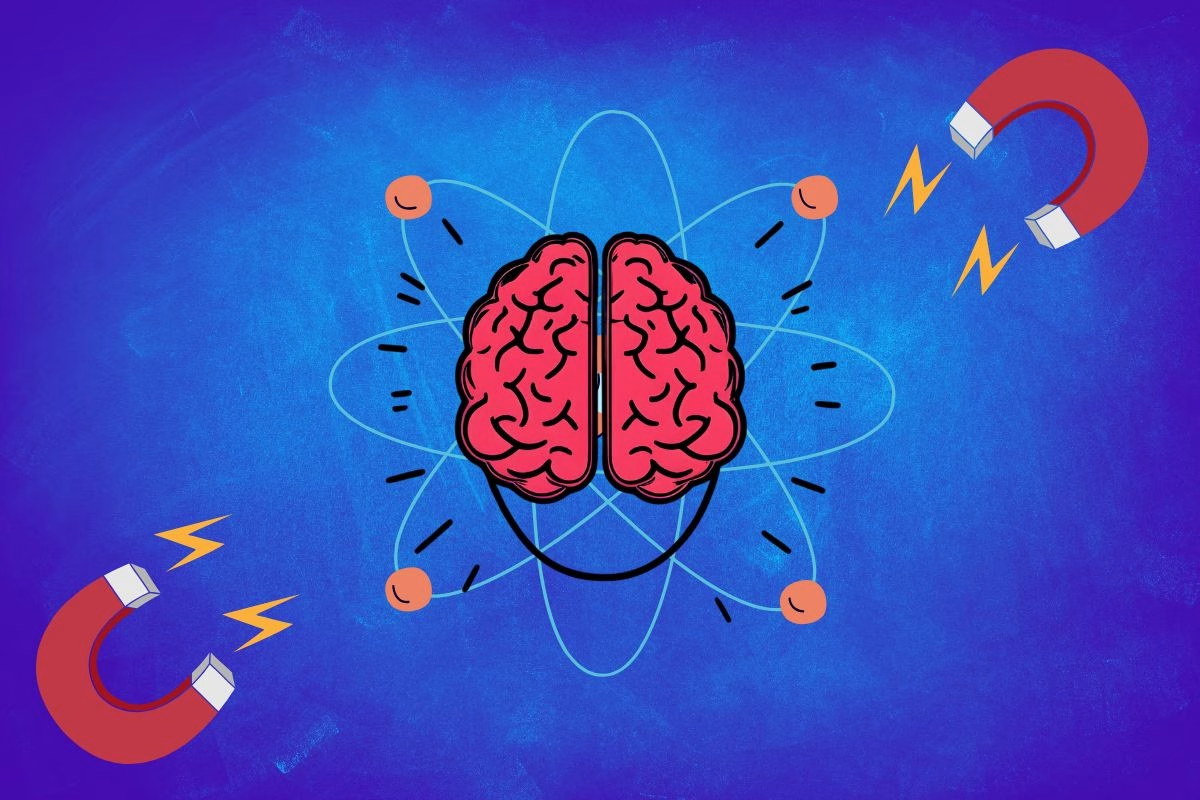
The piece explores ways to overcome procrastination and improve productivity by understanding the brain. It emphasizes taking small starts, the “5-4-3-2-1” technique, crafting a concentration environment, acknowledging small victories, and the use of body resets. Rather than trusting willpower, it suggests taking the brain into a friend mindset and experimentation to work toward a purpose successfully.
The Struggle is Real (and You’re Not Alone)
Last week, I was facing a deadline that loomed like a dark cloud.
My brain, bless its comfort-loving heart, was having none of it. “Let’s watch cat videos instead,” it whispered. And you know what? I almost did.
We’ve all got that inner voice that prefers the easy route. It’s not that we’re lazy; it’s just that our brains are wired for efficiency, and tackling big tasks?
Well, that feels like a lot of work.
Tiny Steps, Giant Leaps (The “Sneaky Start” Method)
Here’s my secret weapon: the “ridiculously tiny start.”
Think of it like tricking your brain into a workout. I used to dread exercise, until I told myself, “Just put on your gym shoes.” No pressure to actually work out, just shoes. And guess what? Nine times out of ten, once those shoes were on, I thought, “Might as well do a few stretches.” And then, boom, a full workout.
It’s about lowering the bar so low that your brain can’t say no. “Just open the document,” “Just write one sentence,” “Just tidy one corner of your desk.” You’ll be amazed how often that tiny start snowballs into something bigger.
The “5-4-3-2-1 Blastoff” (For Those Mornings)
Mornings are a battleground, right?
Especially when your bed feels like a warm, cozy cloud. I use the “5-4-3-2-1 blastoff” technique. It sounds silly, but it works. I lie there, counting down, and by “1,” I literally roll out of bed.
It’s like launching a rocket – a slightly clumsy, sleep-deprived rocket, but still. It breaks that inertia and gets you moving.
Setting the Stage (Like a Productivity Heist)
Sometimes, you need to create an environment that forces focus. I’ve hidden my TV remote, put my phone in another room, and even left myself sticky notes with pep talks. It’s like setting up a heist – you’re preparing the scene for success.
- Phone jail: Put it in another room. Seriously.
- Workspace prep: Set up your desk the night before.
- Positive vibes: Leave yourself encouraging notes. (Yes, I talk to myself. It’s fine.)
The “Just 10 Minutes” Game (For the Procrastinators)
My friend Sarah, a self-proclaimed procrastination master, taught me this one. She tells herself, “Just work for 10 minutes.” It’s a mental trick. “Come on, brain, we can do anything for 10 minutes.” And you know what? Those 10 minutes often turn into 30, 40, or even an hour. It’s about breaking down overwhelming tasks into bite-sized chunks.
The Bribe (Because We All Love Rewards)
Let’s be honest, sometimes you need to bribe your brain. “Finish this report, and you get to watch your favorite show.” It’s not childish; it’s effective. Find what motivates you – a snack, a walk, a few minutes of mindless scrolling – and use it as a reward.
The Physical Reset (When You’re Stuck)
Ever feel so stuck that you want to bang your head against the wall? Don’t. Instead, try a physical reset. Jumping jacks, a quick dance, even just touching all four walls of your room. It sounds weird, but it breaks the mental deadlock and gets your blood flowing.
Your Action Plan (Let’s Get Real)
- Morning tiny task: Pick one small task you’ll do first thing.
- Countdown method: Use the “5-4-3-2-1” for those tough starts.
- 10-minute rule: Promise yourself you’ll work for just 10 minutes.
- Celebrate wins: Even small ones. A happy dance is totally acceptable.
A Friendly Reminder: Your Brain is On Your Side
Picture your brain like a caring if somewhat guarded friend. It is not out to sabotage your hopes; it is simply trying to keep you away from the perceived perils of stress and the unhappiness of the unknown. It has made a snug nest of tried patterns, and stepping out of that is like stepping out into a shiver of the unknown. At other moments, like a parent urging a hesitant child into a novel adventure, you need to give a little push, a word of encouragement to guide it toward the right course.
Let’s Do This Together (Right Now)
Feel that little spark of excitement? Good. Your brain is revving into action. Ready? Choose that little task you’ve put off – the nag that gnawed at you. Let’s all breathe deep together. Inhale… exhale. Relax the shoulders, straighten the spine. Prepare to access that concentration. Imagine that very first little step. Let’s go: 5… (Allow the lungs to fill with the air) 4… (Note the body aligning itself with the effort) 3… (See the momentum increasing) 2… (Focus on that very first action to take) 1… GO! Enjoy the thrill of beginning.
More FAQs Force Your Brain
1. Why does my brain resist doing work?
Okay, picture your brain as a really comfy couch potato. It’s not trying to be a jerk, honestly. It’s just built to conserve energy, like a squirrel hoarding nuts for winter. So, when you throw a big, scary “work” task at it, it’s like asking that couch potato to run a marathon. It’s gonna whine, “Nah, let’s just watch reruns!” Thing is, it’s not personal. Your brain just loves its routines, and anything new feels like a potential energy drain. It’s like, “Hey, that looks hard! Let’s just scroll through memes instead, way less effort.” Understanding this lazy-but-lovable side of your brain helps you trick it into getting stuff done without a full-blown meltdown.
2. What is the “Sneaky Start” method?
Think of the “Sneaky Start” like whispering sweet nothings to your brain. You’re basically saying, “Hey, just put on your gym shoes, no biggie.” Or, “Just open the document, that’s it.” It’s like tricking a toddler into eating veggies by hiding them in a smoothie. Your brain’s like, “Oh, that’s easy, I can do that.” And then, BAM! You’re stretching, or writing, or whatever. It’s all about making the first step so ridiculously tiny that your brain’s resistance is practically nonexistent. Like, “Sure, I can open a document, that sounds easy.” Then, you are off to the races.
3. How does the “5-4-3-2-1 Blastoff” technique work?
Imagine you’re launching a slightly wobbly, sleep-deprived rocket. That’s the “5-4-3-2-1 Blastoff.” You count down, and by “1,” you just move. It’s like hitting the eject button on procrastination. It’s not about being graceful, it’s about breaking that mental freeze. Counting down creates a sense of “now or never,” and the physical action snaps you out of that “ugh, I don’t wanna” zone. Think of it like a jolt of caffeine for your willpower. It’s a quick, slightly chaotic, but effective way to get going.
4. What can I do to create a focused environment?
It’s like setting up a productivity fort. You need to barricade yourself against distractions. That means putting your phone in a “phone jail” (aka another room), hiding the remote like it’s a stolen treasure, and making your workspace look like a productivity command center. Leave yourself little notes, like a secret agent prepping for a mission. Maybe some motivational quotes, or just a reminder to breathe. Use headphones to create your own little bubble. Think of it as preparing the stage for your own personal productivity show.
5. How can I use the “Just 10 Minutes” game to overcome procrastination?
Think of it as a “trial run.” You tell your brain, “Hey, let’s just do this for 10 minutes, no pressure.” It’s like dipping your toes in the water before diving in. Most of the time, those 10 minutes turn into way more, because once you start, the momentum kicks in. It’s like, “Okay, this isn’t so bad, I can keep going.” It’s about breaking down those huge, scary tasks into tiny, manageable bites.
6. Is it okay to reward myself for completing tasks?
Oh, absolutely! It’s like giving your brain a gold star for good behavior. You’re basically saying, “Hey, you did a thing, have a cookie!” or “You worked hard? Here’s that show you love!” It’s not about being childish, it’s about being smart. You’re creating a positive feedback loop. Your brain learns that doing work equals good things, and it’s more likely to cooperate next time. It’s like training a puppy, but for your productivity.
7. What is a “physical reset” and how does it help?
Think of a “physical reset” as hitting the “reboot” button on your brain. You’re basically shaking off the mental cobwebs with some movement. It’s like doing a little dance party to break up the monotony. Jumping jacks, touching the walls, whatever gets your blood flowing. It’s about reminding your body and brain that you’re alive and kicking. It’s a quick and easy way to snap out of a funk and get your focus back.
Final Thoughts (You’ve Got This)
Forcing your brain into action isn’t about willpower; it’s about strategy. It’s about understanding how your brain works and using that knowledge to your advantage. So, pick a technique, give it a try, and watch yourself crush those goals. You’re not alone in this; we’re all figuring it out together.


